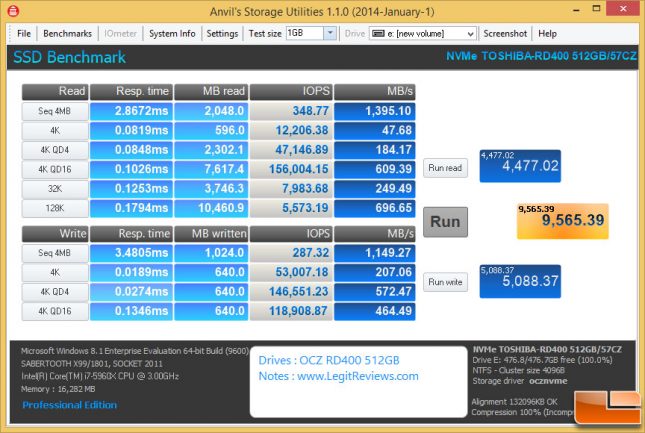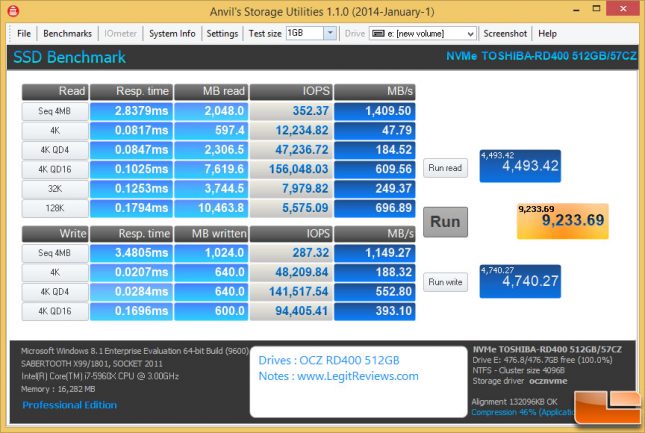Toshiba OCZ RD400 M.2 PCIe NVMe SSD Review – 512GB
Anvil Storage Utilities
Anvil Storage Utilities 1.1.0
Along with the move to a new platform, we decided to make a change in one of the benchmarks. There’s a relatively new benchmark called Anvil Storage Utilities that is in beta but close to production. It’s a very powerful tool that measures performance through a variety of tests which can be customized. Since some of the tests more or less duplicate what we get from other benchmarks we use already, we decided to use the IOPS (Input/Output Operations Per Second) testing on 4kb file sizes at a queue depth of 4, 16, and 32. IOPS performance is something SSD makers tout quite a bit but we generally don’t do a lot of IOPS testing because frankly a lot of users can’t relate to IOPS metrics as well and it tends to be more meaningful to the enterprise/server crowd. Still, it is another performance indicator with relevance and while some drives post good MB/s numbers, their IOPS scores aren’t always commensurate which this test will prove out.
Anvil SSD Benchmark with 100% Compression (incompressible data):
Toshiba OCZ RD400 512GB:
Benchmark Results: The Anvil SSD Benchmark showed that with 100% compression (incompressible data) the Toshiba OCZ RD400 512GB drive scored 9,565.39 points.
Anvil SSD Applications Benchmark at 46% Compression:
Toshiba OCZ RD400 512GB:
Benchmark Results: With the compression at 46% to help mimic real world applications better the performance on the Toshiba OCZ RD400 512GB PCIe SSD scored slightly lower at 9,233.69 points. The lower score appears to have been from lower 4K write scores.


